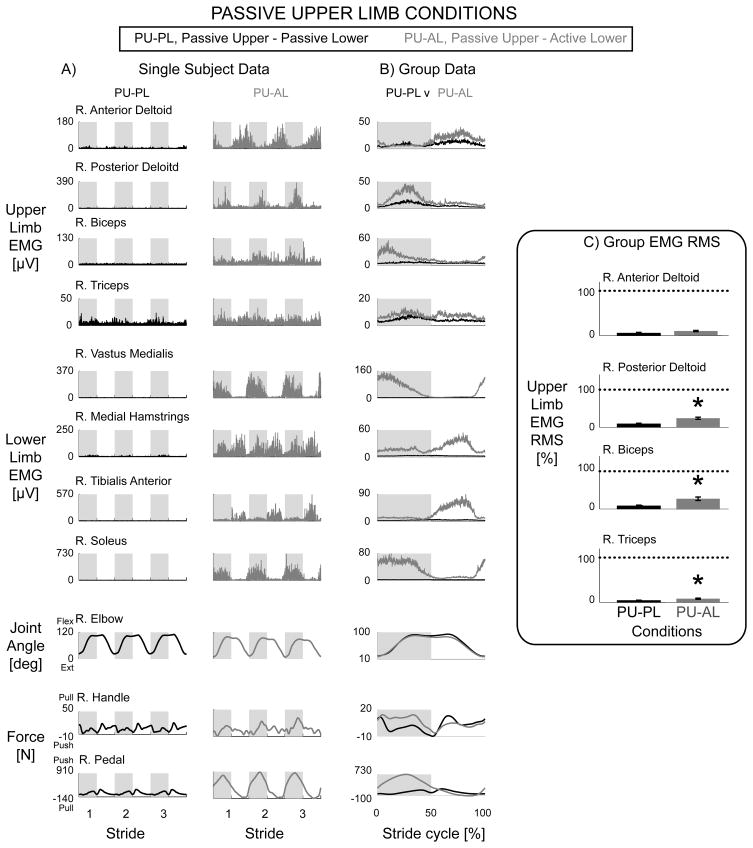Figure 3.
Data from the right limbs for the passive upper limb conditions, Passive Upper & Passive Lower (black) and Passive Upper & Active Lower (grey). Representative single subject data (A) and group EMG mean profiles (B) showed a rhythmic burst-like pattern in passive upper limbs during the Passive Upper & Active Lower condition compared to the Passive Upper & Passive Lower condition. Group EMG RMS amplitudes with standard error bars (C) for Passive Upper & Active Lower were significantly greater than Passive Upper & Passive Lower for the posterior deltoid, biceps, and triceps but not the anterior deltoid (* significantly different, PU-AL > PU-PL, THSD P < 0.05). Dotted line equals 100%. Note different y-axes between A and B. The elbow joint angle profiles and passive handle forces were similar between the two conditions. The pedal force profiles for Passive Upper & Active Lower showed a large increase in lower limb pushing force during the lower limb extending phase of the stride cycle.

